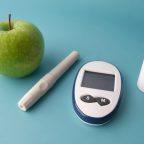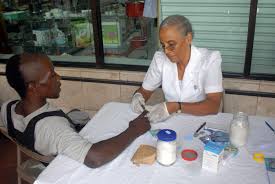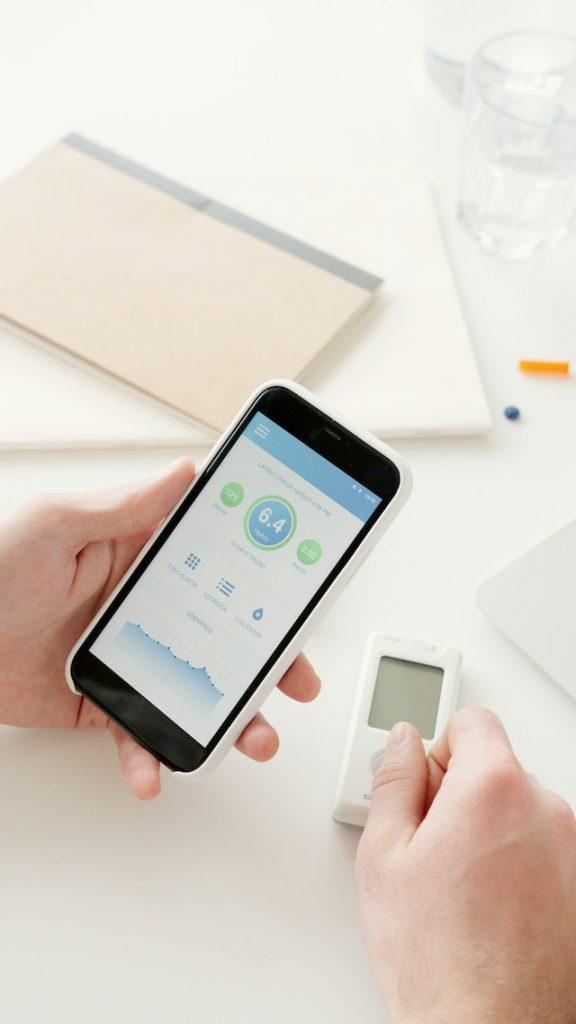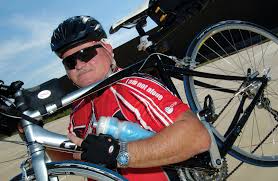Author Archive

Does standing help with insulin sensitivity?
Can insulin sensitivity be restored
An individual can lower their risk of acquiring type 2 diabetes, even if they are overweight, by standing up during extended periods of sitting, according to a recent study.
By 2030, the UN wants to reduce noncommunicable disease-related fatalities by one-third. This is the third of the Sustainable Development Goals.
The fight against chronic diseases caused by a sedentary lifestyle must begin now, quite literally. According to a recent study, standing can aid in the prevention of significant medical diseases, including type 2 diabetes.
Standing is associated with improved insulin sensitivity, according to research from the Turku PET Centre and UKK Institute in Finland.
Blood sugar levels and metabolic processes in the body are controlled by insulin. However, factors like being overweight can interfere with the way the body’s insulin hormone works, resulting in a reduction in insulin sensitivity and a higher chance of developing chronic illnesses like type 2 diabetes.
The body’s cells’ receptivity to insulin is referred to as their insulin sensitivity. The body’s cells can utilize blood glucose more efficiently when there is high insulin sensitivity, which lowers blood sugar levels. This sensitivity may benefit from some dietary and lifestyle adjustments.
What is insulin resistance?
Insulin tolerance, or reduced insulin sensitivity, is a condition in which a person’s body has developed a resistance to the hormone, decreasing its potency. More insulin is therefore required to convince the liver to continue storing glucose and the fat and muscle cells to take up glucose.
Low insulin sensitivity occurs when there is insulin resistance. The opposite is true if you have low insulin resistance and are sensitive to insulin. The health benefits of insulin sensitivity outweigh those of insulin resistance. When cells stop responding to the hormone insulin, it is said that insulin resistance occurs.
What are the symptoms of insulin resistance?
You will not experience any symptoms if you have insulin resistance and your pancreas is able to produce more insulin to keep your blood sugar levels within a healthy range.
Although the cells in your pancreas that produce insulin might deteriorate and insulin resistance can worsen over time. A raised blood sugar level (hyperglycemia), which does result in symptoms, is eventually caused when your pancreas is no longer able to generate enough insulin to overcome the resistance.
Symptoms of high blood sugar include:
• Increased thirst.
• Frequent urination (peeing). Increased hunger.
• Blurred vision.
• Headaches.
• Vaginal and skin infections.
• Slow-healing cuts and sores.
Prediabetes frequently goes unnoticed for years by many people. It is possible for prediabetes to go undetected before turning into Type 2 diabetes. The following signs and symptoms are possible in some prediabetic individuals: –
People with diabetes are more prone to consequences like heart disease, stroke, blindness, kidney failure, and kidney stones, as well as an increased risk of dying young. The disease, which accounts for 1.5 million deaths annually throughout the world, affects one in eleven people.
Standing improves insulin production.
Although it is well known that exercise can benefit people with diabetes and other noncommunicable diseases, the Finnish study was unique in that it focused specifically on how inactivity affects the production of the hormone insulin.
The results, which were reported in the Journal of Science and Medicine in Sport, showed that even among inactive adults who were more likely to acquire type 2 diabetes, insulin function improved when research participants broke up extended periods of sitting by standing up. No matter how long a person sat, how active and fit they were, or whether they were overweight, standing improved their insulin levels.
A worldwide problem
All around the world, noncommunicable diseases (NCDs) like diabetes, heart disease, cancer, stroke, and chronic lung illnesses are becoming more and more of an issue. So much so that the third Sustainable Development Goal (SDG) of the United Nations sets a 2030 aim of a reduction of one-third in premature deaths due to noncommunicable diseases.
The World Health Organization estimates that these lifestyle diseases account for 41 million deaths annually or more than 70% of all fatalities globally (WHO). The fact that more than two-thirds of these fatalities occur in low- and middle-income nations highlights the connection between a poor lifestyle and diseases.
Diabetes, which accounts for 1.5 million annual fatalities worldwide, affects 1 in 11 people.
An individual can lower their risk of acquiring type 2 diabetes, even if they are overweight, by standing up during extended periods of sitting, according to a recent study.
By 2030, the UN wants to reduce noncommunicable disease-related fatalities by one-third. This is the third of the Sustainable Development Goals.
Take a literal stance against chronic diseases of a sedentary lifestyle now. According to a recent study, standing can aid in the prevention of significant medical diseases, including type 2 diabetes.
Standing is associated with improved insulin sensitivity, according to research from the Turku PET Centre and UKK Institute in Finland.
Blood sugar levels and metabolic processes in the body are controlled by insulin. However, factors like being overweight can interfere with the way the body’s insulin hormone works, resulting in a reduction in insulin sensitivity and a higher chance of developing chronic illnesses like type 2 diabetes.
A stroke, blindness, renal failure, and heart disease are among the consequences that can affect people with diabetes.
Diabetes patients are more at risk for early death as well as complications like heart disease, renal failure, blindness, and stroke. The illness, which affects one in eleven people globally and results in 1.5 million deaths annually, is a killer.
Standing improves insulin production.
Although it is well known that exercise can benefit people with diabetes and other noncommunicable diseases, the Finnish study was unique in that it focused specifically on how inactivity affects the production of the hormone insulin.
The results, which were reported in the Journal of Science and Medicine in Sport, showed that even among inactive adults who were more likely to acquire type 2 diabetes, insulin function improved when research participants broke up extended periods of sitting by standing up. No matter how long a person sat, how active and fit they were, or whether they were overweight, standing improved their insulin levels.
Noncommunicable diseases like type 2 diabetes can be avoided with regular physical activity.
Along with a poor diet, inhaling tobacco smoke, abusing alcohol excessively, and lack of physical activity are four long-term key risk factors. 1.6 million fatalities per year are thought to be brought on by inactivity or inadequate exercise.
What’s the solution?
The WHO urges people to alter their bad dietary and lifestyle habits in order to prevent the emergence of NDCs.
Programs for detection, screening and treatment are essential components of managing NDCs, but many individuals in low- and middle-income countries have inadequate access to healthcare.
Even while there is not a single way to guarantee that more people have access to global healthcare systems, policy initiatives like the WHO’s Global Coordination Mechanism on the Prevention and Control of NDCs serve as a foundation for cooperation in the effort to address this rising issue.
FAQ
Does standing lower insulin?
Even for sedentary adults who were more likely to acquire type 2 diabetes, the study’s findings, which were published in the Journal of Science and Medicine in Sport, showed that when participants broke up extended periods of sitting by standing up, their insulin function improved.
How do you reduce insulin sensitivity?
The greatest strategy to fight insulin resistance is likely to be through exercise. In both the short and long terms, exercise can significantly lower insulin resistance. Insulin resistance can be decreased with weight loss. In order to treat insulin resistance, no drugs have been explicitly approved.
Does sitting increase insulin resistance?
Acute exercise is insufficient to reverse all of the alterations caused by sitting since it raises insulin resistance and affects the transport and oxidation of fatty acids in muscle tissue.
Does walking spike insulin?
The findings of this study demonstrate that walking exercise dramatically reduces serum levels of the cytokine known to be associated with insulin resistance, as well as insulin function and the insulin resistance index by lowering abdominal fat.
Can insulin sensitivity be reversed?
Your body may respond to insulin more favorably if you exercise and, if necessary, lose weight. In those with prediabetes, making simple changes, such as eating healthier foods and exercising more to lose weight, can help reverse insulin resistance and prevent or delay type 2 diabetes.
What does high insulin sensitivity feel like?
Severe hunger or thirst having a hunger pang even after eating. Frequent or increased urinating tingling in the feet or hands.
How long does it take to fix insulin sensitivity?
To begin the process of correcting insulin resistance, a minimum initial lengthy fast of 36 to 3 days may be required. Fung recommends initial fasts ranging from 7 to 21 days for people who are very fat. The longest known fast under medical supervision lasted more than a year in a person weighing more than 460 lbs.
Should diabetics keep their feet up?
Additionally, have a thorough inspection performed by your foot doctor every year (or more frequently if you have nerve damage), during which the feeling and blood circulation in your feet will be examined. Continually pump blood. Put your feet up when you’re sitting and spend a few minutes at various points during the day wriggling your toes.
Does belly fat mean insulin resistance?
Insulin resistance and type 2 diabetes are more likely to occur as a result of abdominal fat accumulation than any other type of body fat. Inflammation of abdominal fat is recognized to be hazardous, but the cause of the inflammation has been difficult for researchers to pinpoint.
Does weight loss fix insulin resistance?
Achieving and maintaining a healthy weight can help people who already have diabetes or are at high risk of developing it reduce their risk of developing insulin resistance, prediabetes, diabetes, and the health complications that can arise from these conditions.

Diabetic Gifts
Are you searching for the ideal diabetic Christmas gift for a friend or family member who has the disease? There is no need to search further.
The list of my favorite diabetic presents, which I believe are appropriate for any occasion, is provided below. You should think about whether people with diabetes would value a gift before making any purchases for them.
Theoretically, you may give someone who has diabetes any gift in the world. Still, occasionally it is fun to find something themed, humorous, and practical for the disease.
All of the items I have listed below that are diabetic-themed are things I truly like and would love to get because I appreciate all presents. I have divided these wonderful gifts into various themed groups to make it easier for you to find what you are looking for.
Wherever it was possible, I have also included links to products, albeit some of them might not be accessible in all nations.
Practical Diabetes Gift
On the market, there are a ton of pretty cool tools, gizmos, and gadgets that make a living with diabetes simpler or more fashionable. I will go over some of the best in the section below.
Myabetic Cherise Diabetes Handbag
In terms of fashionable and useful bags for people with diabetes, Myabetic is a front-runner. There is something for everyone, and to be really honest, they have made a product that actually encourages you to take all of your diabetic supplies with you in style.
Even evening-wear bags for those romantic nights are available, along with bags for traveling with diabetes and elegant backpacks. You may see some of my favorites in the list below.
Myabetic Marie Diabetes Crossbody
This is a really fashionable purse that is ideal for days when you are going out for coffee with friends, exploring a new city, or on a special date or occasion. The black version is my favorite because it complements every outfit. All of your diabetes supplies, including your blood glucose meter, CGM receiver, and insulin, are hidden in compartments in it. It can also serve as a bag, holding items like your phone, wallet, and lipstick. The ideal handbag for women! Particularly when passing through airport security.
Myabetic Banting Diabetes Supply Case
You can be sure to discover a color for this classic case that fits your style and personality because it is available in so many distinct hues. If you have diabetes and travel, this is a great everyday gift for your supplies because it fits comfortably in a larger luggage or backpack.
Additionally, it can accommodate a variety of items, including test strips, a blood glucose meter, two insulin pens, syringes, and insulin vials. Additionally, it is a fantastic alternative for both men and women of all ages due to its style and color scheme.
Myabetic Edelman Diabetes Backpack
Personally, I like this the best. It is a terrific method to combine diabetes and style because it is really fashionable, available in a variety of colors, and simply all-around great. I adore its intelligence and the fact that I can never tell it is holding medical goods.
This diabetes gift also contains a front area that can hold your critical diabetes testing supplies, such as a glucose meter, test strips, insulin pens, and vials. It also has an internal pocket that is insulated, so you can put a cold pack inside to keep your insulin cool.
What a wonderful thing! Although this item is probably the costliest in the store, I believe it is totally worth the cost, given the quality, elegance, and convenience you receive. Additionally, I think this is fantastic for young people who might feel a little self-conscious about having diabetes.
Sugar Medical – Insulated Diabetes Sling Backpack
While ladies can certainly use it, it appears like this bag was designed with males in mind. The bag is the ideal backpack that you may carry on sports days, runs, or even hiking. It comes in a variety of fantastic colors.
Additionally, this diabetic gift basket contains an insulated compartment for juice boxes, glucagon, a cold pack, or a water bottle, in addition to holding all of your necessary diabetic supplies like testing strips, lancets, insulin, and many more.
When you are out and about, taking long walks, or just traveling in general, Frio, an insulin cooling case, is a terrific method to keep your insulin cool. It is a terrific, practical concept because it is also the kind of item you frequently forget to buy. You are guaranteed to discover one that someone will adore as a present because they are available in a wide range of sizes and designs.
Diabetic Accessories
You may spruce up your diabetic devices with the various attractive stickers that are readily available today. They do not have to be monotonous any longer. Use one of several incredibly cool designs to express yourself.
Take a look at some of the below-listed accessories for the following gadgets:
• FreeStyle Libre
• Type 1 Tactical Insulin Pump Holster (Medtronic)
• Dexcom
Birthday Gifts for Diabetics
I have ideas for humorous novelty gifts relating to diabetes if you want to buy a loved one or friend. Your loved one with diabetes is sure to like these and they make fantastic birthday presents.
Younger boys and girls who need a little encouragement to know they are brave and amazing will love receiving this. It is quite entertaining and enjoyable because unicorns are featured on it. Offered in five different hues.
• Zombies Ate My Pancreas Shirt
A diabetes awareness shirt that sells well. Available in six colors and for both men and women.
• A Novelty Mug
Classic diabetes statements can be found on a ton of amazing mugs that are currently available. If I had enough space, I might start a collection. Below is a list of some of my favorites. To give a friend, they are wonderful, straightforward gift. “Be nice to diabetes, we deal with enough pricks already.”
• “Proud Owner of a Useless Pancreas“
• “I’m Not Drunk I’m Diabetic“
• “Dear Diabetes, You Picked the Wrong Bitch”
A foot massager of some kind might be a good idea to help maintain those feet healthy and ease any discomfort caused by neuropathy since people with diabetes are prone to foot problems if complications with their blood sugars occur over an extended period of time. There are several options available that will fit all price ranges.
However, I believe that the TheraFlow Foot Massager Roller is both cool and affordable. This is a fairly amazing approach to help if you’re looking for gifts for those with diabetic neuropathy.
• A good book
There are a ton of books on blood sugar control and diabetes that are available. Some of the most well-liked diabetic books available are listed below: –
• The Diabetes Diet
• The Complete Diabetes Cookbook
• Diabetes Meal Planning and Nutrition for Dummies
• Complete Diabetes Guide
• Even Superheroes Get Diabetes – Insulin comic for kids
Diabetic Gifts for Men
The perception is that men are generally a little trickier to buy for. There are goods available that are suitable for men as well, despite the fact that the market for diabetic accessories appears to be geared toward women.
• Fitbit Charge 5 – Made for men with busy lifestyles and who love fitness
• Divoti Sport ID Medical Alert Bracelet
• Men’s Diabetic Outdoor Alpaca Socks
Frequently Asked Questions
Is a fruit basket a good gift for a person with diabetes?
Apples, pears, oranges, and other citrus fruits, as well as peaches, apricots, and nectarines, are your best choices. A simple fruit basket can be elevated to the status of a remarkable present by adding unusual types of any of these, or at the very least, a variety of colors and forms.
How do you cheer up someone with diabetes?
You cannot cure the sickness, but there are many ways you may provide kindness, support, and support.
• Do not nag!
• Encourage healthy eating
• Attend a diabetes support group with them
• Offer to attend doctor appointments
• Be observant of drops in blood
• Exercise together
• Be positive
Are nuts good a good gift for people with diabetes?
For people with diabetes, nuts are an excellent choice for a snack since they offer the best of all worlds: low in carbohydrates, high in protein, fiber, and good fats, and they make you feel full.
Is sugar-free chocolate good for people with diabetes?
Despite the fact that there isn’t a distinct “diabetic chocolate,” “sugar-free chocolate” usually refers to chocolate that has been sweetened using calorie-free or low-calorie sugar replacements. Since these alternatives have no effect on blood sugar, they are typically safe for people with diabetes.
What can I put in a diabetic gift basket?
Apples, pears, oranges, and other citrus fruits, as well as peaches, apricots, and nectarines, are your best choices. A simple fruit basket can be elevated to the status of a remarkable present by adding unusual types of any of these, or at the very least, a variety of colors and forms.

15 Healthy Foods for the Pancreas
Both digestion and blood sugar regulation are critically dependent on the pancreas. The six-inch-long organ, located beyond the stomach, secretes digestive enzymes that aid in the body’s breakdown of proteins and carbs.
Additionally, it creates hormones that control blood sugar and aid in the digestion of food. One of the most important factors in maintaining a healthy pancreas is diet.
1. Garlic
While causing the pancreas to create more hormones, garlic naturally lowers blood sugar levels. The ideal method to take advantage of the therapeutic effects of garlic is to consume a clove or two raw on an empty stomach.
Even if it is unpleasant to eat, there are still advantages to mixing it with other foods. Garlic helps the pancreas and also helps with infection prevention, circulation improvement, and treatment of intestinal parasites.
2. Spinach
Iron and vitamin B are both found in spinach, and vitamin B is necessary for the pancreas to operate properly. This advantage is also provided by other leafy vegetables like Swiss chard and kale.
Spinach considerably lowers the likelihood of inflammation, which lowers the risk of pancreatic cancer. It also contains MGDG agents, which, according to a study, significantly inhibit the pace of proliferation of cancer cells in the pancreas.
3. Broccoli
Sulfur, which is present in broccoli, aids in the detoxification of tissues like the pancreas. The cruciferous vegetable is also high in apigenin, which helps lessen or prevent neuroinflammation and Alzheimer’s disease.
Since lengthy cooking can destroy many nutrients, broccoli is most beneficial when consumed raw or only lightly steamed. The benefits of this cuisine have been supported by several research over the years, particularly in terms of type 2 diabetes management and prevention.
4. Grapes
For the pancreas, red grapes are good. They have antioxidants, such as resveratrol, which guard the tissues against harm. Inflammation and blood vessel damage are both reduced and prevented by resveratrol.
Grapes can enhance glucose uptake by the cells and carbohydrate metabolism, both of which affect how sensitive the body is to hormones.
5. Sweet Potatoes
Beta-carotene, a potent antioxidant found in abundance in sweet potatoes, supports pancreatic health by preserving pancreatic cells and hormone control. Regular intake of sweet potatoes releases natural sugars into the bloodstream more gradually than processed sugar does, which causes spikes in blood sugar.
6. Blueberries
In general, berries are good for you, but certain substances in blueberries urge cancer cells to self-destruct, not just in the pancreas but also in other organs.
Antioxidants found in abundance in blueberries guard against oxidative stress, which lowers the risk of pancreatic cancer by reducing pancreatic free radical damage.
Numerous studies have found that consuming fresh blueberries can also lower the risk of acquiring type 2 diabetes. They also lessen the probability of inflammation and vascular damage caused by diabetes.
7. Yogurt
Yogurt contains probiotics that assist the digestive system in functioning better, which has a direct impact on the pancreas’ health. Yogurt may be the only dairy product that can support a lower risk of type 2 diabetes, according to several research. The best yogurt to eat is always that which is marked as having “active cultures.”
8. Reishi Mushrooms
Reishi mushrooms, which have been used in traditional Chinese medicine for millennia, have anti-inflammatory and anti-swelling properties.
Beta-glucan polysaccharides and triterpenes lessen the risk of pancreatic cancer, and they are also highly prized for their antioxidant content, which mostly consists of phytochemicals that inhibit free-radical damage.
Reishi mushrooms have a variety of health advantages, one of which is their ability to stop cancer cells from harming healthy body components.
9. Licorice
Since it contains a lot of amorfrutin, which helps lessen pancreatic inflammation and help lower blood sugar levels, pure licorice has been used for thousands of years as a herbal remedy.
Amorfrutin also increases hormone resistance and lowers the likelihood of fatty liver development. The simplest approach to take advantage of the root’s many health benefits is to drink licorice root tea.
10. Horseradish
Horseradish is more than simply a wonderful, hot condiment. Because of the quantity of glucosinolates in the root, it can also benefit the pancreas’ health. These substances could assist get rid of known carcinogens that might cause pancreatic cancer as well as slow the formation of malignant tumors.
11. Lemon
Lemons assist the pancreas fight oxidation and are a fantastic source of vitamin C. The pancreas suffers from disease-causing cell damage as a result of oxidative stress.
According to studies, vitamin C prevents this process from happening and strengthens the pancreas cells’ immune system, so preventing harm. Lemons are also a good source of magnesium, which helps the pancreas produce enzymes and combat the effects of inflammation.
12. Oregano
The flavonoids in oregano may be able to destroy pancreatic cancer cells in part because of the presence of two chemical substances called luteolin and apigenin, though more studies are required to confirm this.
By reducing the likelihood of oxidation and the formation of scar tissue, luteolin, especially in those with diseases, helps to minimize pancreatic inflammation.
A unique enzyme known as GSK-3 was also discovered to be blocked by apigenin, according to researchers. This enzyme inhibits apoptosis, which causes cancer cells to die. Overall, including oregano in meals exposes people to these flavonoids and may support the pancreas’ health.
13. Calendula
Insulin, a hormone that aids in normal sugar metabolism in the body, and its companion, amylin, a hormone that encourages satiety, are produced and secreted by pancreatic T2 cells.
In diabetics, the insulin-producing beta cells are harmed, and as a result, they are less able to make insulin, which results in hyperglycemia.
Additionally, these cells are susceptible to oxidative and nitrosative stressors, which might worsen their condition. According to a study done on animal models, calendula naturally combats these stresses and even aids in the repair and regeneration of the pancreas.
14. Haritaki
Long used for both prevention and treatment of vascular, visceral, and muscular illnesses, haritaki, Terminalia chebula, is a common ingredient in Tibetan and Ayurvedic medicine.
The pancreas may even become more effective because of the dried fruit in it, which is a well-known anti-diabetic ingredient. Haritaki may boost the creation of insulin and improve the transit of sugar, giving muscles the energy, they require, according to studies.
In addition, it takes longer for carbohydrates to break down, which may aid in keeping blood sugar levels balanced.
15. Goldenseal
Goldenseal is a traditional remedy used by Native Americans to treat infections as well as to improve the capacity and function of the pancreas and other critical organs.
Berberine, the active component, is an anti-inflammatory alkaloid that strengthens pancreatic beta cells while also lowering fasting blood sugar and increasing the sensitivity of insulin receptors.
A well-known antiseptic for small wounds is goldenseal. People with diabetes who are susceptible to wound infections should find this very helpful.
Frequently Asked Questions
How can I repair my pancreas naturally?
Concentrate on consuming meals that are high in protein, low in animal fats, and high in antioxidants to maintain the function of your pancreas. Try beans, lentils, clear soups, and dairy substitutes, as well as lean meats (such as flax milk and almond milk). These will be easier for your pancreas to process.
How do you cleanse your pancreas?
Drinking lots of water and eating fresh fruits and vegetables are two of the best things you can do to help your pancreas get clean. Eating fruit with a high-water content is especially important.
Moreover, eat more meals high in fiber. For appropriate digestion and intestinal health, fiber is required.
How do you give your pancreas a rest?
• Until you feel better, sip on clear drinks and consume bland foods.
• Eat a low-fat diet up until your physician declares that your pancreas has recovered.
• Keep alcohol out of your system.
• Take medications with caution.
• Take antibiotics exactly as advised by your doctor.
• As you wait to feel better, get more sleep.
How do you make your pancreas start working again?
Some lifestyle changes you can make include exercising, managing your stress, losing weight, and detoxifying. These aid in boosting the pancreas’ beta cells’ ability to operate and improve insulin output.
How long does it take for the pancreas to heal?
With acute pancreatitis, the majority of patients recover within a week and are strong enough to go home after 5–10 days. In contrast, recovery takes longer in severe cases because complications that call for additional care may arise.
Which fruit is good for the pancreas?
Dark, green vegetables, red berries, blues, sweet potatoes, grapes, carrots, walnuts, and pomegranates are just a few examples of foods high in antioxidants that are advantageous. However, consume avocado, olive oil, fatty fish, nuts, and seeds in moderation.
What is the fastest way to cure pancreatitis?
A few days of rest and treatment are typically enough to cure mild acute pancreatitis. The following additional procedures might be used to treat more severe pancreatitis: Surgery.
If gallstones are to blame for your pancreatitis, your doctor might advise cholecystectomy surgery, which involves removing the gallbladder.
Is coffee good for pancreatitis?
A study that was published in Digestive Diseases and Sciences suggests that drinking a lot of coffee may lower your risk of developing pancreatitis.

The Difference Between Type 1 and Type 2 Diabetes
Despite having names that sound similar, type 1 and type 2 diabetes are two separate illnesses with distinctive causes.
Type 1 diabetes and type 2 diabetes are fundamentally distinct from one another since type 1 is thought to be brought on by an autoimmune response and manifests in infancy.
Long-term lifestyle variables like inactivity and obesity are linked to the development of type 2 diabetes, which occurs over a number of years. The diagnosis is typically made in adults.
However, family history may be important. Type 1 diabetes risk factors are not completely understood.
Causes Of Type 1 Diabetes
The immune system of the body defends against outside intruders, such as dangerous germs and viruses.
• It is thought that an autoimmune response is what causes type 1 diabetes. When a person has type 1 diabetes, their immune system misidentifies healthy cells from their body as foreign invaders.
• The insulin-producing beta cells of the pancreas are attacked by and destroyed by the immune system. The body is unable to manufacture insulin if these beta cells are gone.
Why the immune system occasionally targets the body’s cells remains a mystery to researchers. It might be influenced by genetic and environmental elements, such as virus exposure.
There is a continuous investigation into autoimmune illnesses. Type 1 diabetes is not brought on by diet or way of life.
Causes Of Type 2 Diabetes
- Insulin resistance is a complication of type 2 diabetes. Although the body continues to manufacture insulin, it is unable to utilize it efficiently.
- Although there are a number of lifestyle factors, such as being sedentary and being overweight, that may be involved. Researchers do not yet fully understand why some people develop insulin resistance while others do not.
- Additional genetic and environmental factors might also be important. Your pancreas will attempt to make up for this by generating more insulin if you acquire type 2 diabetes. Glucose builds up in your bloodstream as a result of your body’s inability to utilize insulin properly.
How Does Diabetes Affect the Body?
Type 1 and type 2 diabetes are the two most common varieties.
• Each kind of diabetes is a chronic illness that interferes with your body’s ability to control blood sugar or glucose levels. Your body’s cells run on glucose for fuel, but glucose needs a key to get into your cells. That key lies in insulin.
• Insulin production is absent in those with type 1 diabetes. It is comparable to being locked out.
• In the later stages of the disease, type 2 diabetics frequently produce insufficient insulin and do not respond to insulin as well as they should. It’s comparable to having a key that is broken.
• Chronically high blood sugar levels are a risk for both types of diabetes. Diabetes problems are now more likely as a result.
What Are the Risk Factors for Type 1 And Type 2 Diabetes?
Type 1 diabetes risk factors are less understood than type 2 diabetes risk factors.
Some known risk factors are:
- Family history: A person is more likely to develop type 1 diabetes if they have a parent or sibling who has the disease.
- Age: Although type 1 diabetes can develop at any age, children and teenagers are the age group where it most frequently does.
Type 2 Diabetes Risk Factors
Type 2 diabetes is a possibility for you if you:
• Possess prediabetes or have just raised blood sugar
• Have a weight problem or are obese
• Excessive belly fat
• Are not active three times a week or more
• Are older than 45
• Own a history of gestational diabetes, or diabetes while pregnant, and have given birth to a child that weighed greater than 9 pounds.
• Are Black, Hispanic or Latino, American Indian, or Alaska Native people more likely to experience health inequalities because of structural injustices?
• Possess a type 2 diabetic member in close family
• Afflicted with polycystic ovary syndrome
What Are the Symptoms of Diabetes?
Type 1 and type 2 diabetes both have symptoms that might develop if not treated, including:
• Frequent urination
• Feeling very thirsty and drinking a lot.
• Feeling quite hungry.
• Feeling extremely worn out.
• Having vision haze
• Not having your cuts or sores heal completely.
• Extremely dry skin
• Being sick more frequently than usual
• Mood swings, impatience, and accidental weight loss are among the symptoms that type 1 and type 2 diabetics may face.
• Diabetes and tingling in the hands and feet. Diabetes of any kind, including type 1 and type 2, can cause tingling and numbness in the hands and feet. According to the American Diabetes Association, type 1 diabetes patients’ chance of experiencing tingling and numbness is greatly decreased by good glucose control (ADA).
Type 1 and type 2 diabetes show in completely different ways, although sharing many of the same symptoms.
Many types 2 diabetics do not have symptoms for many years, and when they do, they often progress slowly and gradually.
When type 2 diabetes first develops, some people do not even have any symptoms and do not know they have it until serious consequences. Typically, over the course of several weeks, type 1 diabetes symptoms appear suddenly. This kind, formerly known as juvenile diabetes, typically appears in childhood or adolescence. Later in life, type 1 diabetes is, however, a possibility.
How Are Type 1 and Type 2 Diabetes Treated?
Right now, type 1 diabetes has no known cure. Insulin must be regularly given, and blood sugar levels must be tested often in those with type 1 diabetes because they cannot make any.
A few people inject themselves multiple times a day into soft tissue like the stomach, arm, or buttocks. Pumps for insulin are used by others. The body receives insulin through a tiny tube from insulin pumps in a consistent dosage.
Due to the rapid ups and downs in blood sugar levels, blood sugar testing is a crucial component of managing type 1 diabetes.
However, many patients require further assistance. Type 2 diabetes can be controlled and even prevented with diet and exercise. Medications that improve the way your body uses insulin may be prescribed by your doctor if lifestyle changes are ineffective.
A crucial component of managing type 2 diabetes is regularly checking your blood sugar. You cannot determine whether you are achieving your target levels without it.
Blood sugar checks may be advised more frequently or on an as-needed basis by your doctor. Your physician might suggest insulin injections if your blood sugar levels are high.
Can Diabetes Be Prevented?
It is impossible to prevent type 1 diabetes. With certain lifestyle modifications, such as keeping a reasonable weight, you may be able to reduce your chance of getting type 2 diabetes.
Working with your doctor to create a healthy weight-loss plan, increasing your exercise levels, eating a balanced diet, and consuming fewer sugary or highly processed foods are all ways to lose weight if you are overweight.
Careful monitoring can restore your blood sugar levels to normal and stop the onset of serious problems even if you are unable to prevent the disease.
FAQ
Is type 2 diabetes better or worse?
Many times, type 2 diabetes is less severe than type 1. However, it still has the potential to have severe health consequences, particularly in the sensitive blood vessels of your kidneys, nerves, and eyes. A stroke and heart disease are also become more likely by type 2.
Can type 2 diabetes go away?
Type 2 diabetes has no known treatment options. However, it might be feasible to reverse the disease to the point where you no longer require medicine to manage it, and your body is not adversely affected by having blood sugar levels that are too high.
Can walking cure diabetes?
Walking can help lower blood glucose levels and thus improve diabetes control, according to research studies.
Is fasting good for diabetes?
Fasting routines have been shown to be effective in reducing the signs and symptoms of diabetes and addressing some of its underlying causes, according to preliminary studies. However, not everyone should engage in the practice, and many dieticians and medical professionals continue to provide warnings about potential harm to metabolic and blood sugar health.
How do you reset your pancreas?
US researchers claim that by following a certain fasting diet, the pancreas might be encouraged to rebuild itself. In animal studies, diabetes symptoms were cured by restoring the organ’s ability to manage blood sugar levels. According to the study, which was published in the journal Cell, a diet “reboots” the body.
Reversing Diabetic Neuropathy
Picture living with the lingering reality that one day you’ll wake up not feeling your feet, and this lost sensation could result in infection, ulceration, or even your limbs being amputated. This dingy and yet actual condition is referred to as diabetic peripheral neuropathy (DPN).
Around 60% to 70% of patients living with diabetes suffer nerve damage at some point, according to research carried out by the National Institute of Diabetes, Kidney, and Digestive Disease.
Can diabetes be controlled using medication?
Well, no. diabetes cannot be treated using medication alone. Our culture has brought in some fantasy that you can consume anything, not exercise, and that some injections or a few pills will fix any disease. However, this is all a fallacy.
Diabetes appears treatable with pharmaceuticals only on the surface. Hemoglobin A1C and fasting blood sugar levels all seem to improve with time. Looking at these key indicators, you can conclude that a patient is doing pretty well, but these can be quite misleading if not combined with a closer look at the patient’s lifestyle and dietary habits.
Fasting blood sugar tests are typically carried out within eight hours of fasting and are a clear indication of your sugar levels currently under controlled conditions. They are not an accurate reflection of possible blood sugar levels over time. Hemoglobin A1C tests measure your glycated hemoglobin levels in three months, usually the lifespan of red blood cells. This provides a more realistic reflection of your blood sugar levels.
If you’ve got a diabetes peripheral neuropathy condition, it’s essential to keep a diet journal if you want to regulate your sugar levels and keep your diet in check. Most diets are sorely redefined carbohydrates. These glycemic-filled and processed foods are the primary cause of diabetes.
Instead of eradicating these illness-causing foods from the diet, most people depend on prescribed medication. This brings in some sense of false security. Yes, take the drug, but better still, combine these with exercises and proper dieting.
Every time you consume carbohydrates, your sugar levels go above average. If this happens, then you are at risk of suffering from glycation. Glycation refers to the damage of the microscopic blood vessels in the body, usually caused by excess blood sugar. This then results in nerve degeneration, causing neuropathy.
So, what can be done to reverse neuropathy?
First, be your health advocate. Learn all you can about eating healthy and practice it while still taking your medication as prescribed. This is the essential step that you must stake if you’re on the verge of reversing or preventing diabetic peripheral neuropathy and all the negative implications that it tags along.
If you’ve got diabetes, changing your diet is a must. So, what should you be eating?
Protein. Ensure your diet is 40% pure, healthy lean protein. Always include grass-fed chicken, pork, lamb, beef, or fish in your diet. Be sure to include vegetarian protein sources such as tempeh and traditionally prepared soya too.
Organic. Consuming organic dishes reduces your body’s toxic load, making it less harmful to your immune system.
Fat. Include 30% fat in your diet. Use healthy fats while cooking. Healthy fats include olive oil, sunflower oil, sesame oil, and grapeseed oil. Also, add seeds and nuts as primary snacks in your diet and negligible amounts of dairy.
Carbs. Carbohydrates should take up less than 30% of your diet. You should focus majorly on vegetables, fruits, sprouted grains, and whole grains as well. Avoid excessive consumption of processed starchy vegetables, sweetened beverages, baked goods, alcohol, and fruit juices.
Careful assessment of your dietary portions and eating a balanced diet will reduce medication uptake and, in most cases, eliminate their use. Preventing sugar peaks and eating healthy reduces glycation damage and speeds up the healing process of the damage already caused. Be sure to exercise regularly and take enough water too.
It’s evident that the ideal way to treat neuropathy is prevention. Nonetheless, if DPN manifests, you can always reverse it only if you become more proactive and educate yourself more. Remember, eat healthily, exercise more, and you may never need those pills anymore!
Reversing Diabetic Neuropathy
Apple Cider Vinegar for Diabetes
Vinegar is capable of controlling any form of diabetes. A study conducted by researchers from Arizona University tested for glucose levels in subjects after every meal and discovered that those tested who had insulin resistance low postprandial (after meal) glucose.
The researchers concluded that vinegar is capable of slowing down the absorption of carbohydrates in the blood and slowing down the ability of the body to digest starches into sugars.
The conclusion of the study was that the apple cider vinegar taken by the subjects was more efficient in reducing postprandial glucose in those who were insulin resistant.
These results show that vinegar triggers insulin sensitivity. More research shows that vinegar consumption during bedtime minimizes morning fasting glucose in the blood and might promote the production of insulin.
It is mind-blowing to note that a basic chemical such as vinegar, which is readily available, could have similar beneficial effects as diabetic medication just for a few cents per dose.
It is efficient for type1 and type2 diabetic patients, particularly for those with postprandial glucose. This glucose represents 30% to 70% of A1C test values.
Most people are still not using vinegar as a treatment for diabetes yet it is the most cost-effective treatment for diabetes in all of history.
Doctors are not prescribing it for their patients but they should realize that natural approaches to treatment work and patients should know about this.
Due to vinegar affordability, it may not seem like a viable solution for diabetes. People are used to relating solutions to exotic prices and they may ask, “Is apple cider vinegar good for diabetes?” The answer is absolutely.
Vinegar signals our bodies to produce insulin instead of resisting it. The carbohydrates in our diet today are absorbed before they are broken down so our bodies do not get the signal to prepare for them. Vinegar triggers the hormones and transmitters to respond in kind. Apple cider vinegar has real benefits.
Apple Cider Vinegar for Diabetes
Control Diabetes
According to the American Diabetes Association (ADA), more than 29 million Americans have been diagnosed with diabetes. In addition, it’s estimated that diabetes goes undetected in almost one of four Americans. As diabetes continues to remain one of the top leading causes of death in the United Sates, the ADA estimates that the total cost of diabetes in the United States stands at$245 billion, which means one in five healthcare dollars is spent treating diabetes and its complications.
top leading causes of death in the United Sates, the ADA estimates that the total cost of diabetes in the United States stands at$245 billion, which means one in five healthcare dollars is spent treating diabetes and its complications.
Furthermore, the ADA reports that another 86 million people have been diagnosed with pre-diabetes, which means that they have higher than average levels of blood sugar. Without testing, people do not know they have this condition. If left untreated or ignored, many individuals with pre-diabetes will develop diabetes (usually type 2).
Just 5% of body weight loss could take obese a long way to fight type 2 diabetes and coronary heart disease. Acting on this insignificant proportion could play significant role in lives of people suffering from obesity. This is a new finding by researchers from Washington University School of Medicine in St. Louis, Missouri.
Control Diabetes
Earlier, it was suggested to reduce body weight by about 5 to 10% for good health. But now, the experts recommend something else. “Five percent is really a very reasonable goal for most obese patients to achieve, it’s much easier than 10%”, said senior author Dr. Samuel Klein of Washington University School of Medicine in St. Louis, Missouri.
For the study, the researchers put 40 participants on goals to either reduce their body weight by 5, 10 or 15%, or to stay at their current body weight. There were 19 participants, out of 20, to be able to achieve the target of 5% w
eight loss. Some of them even reduced more than that. The average weight of participants was about 106 kg, which was reduc
ed to 100.8 kg after achieving the target of 5%.
The results of the tests disclosed the facts that people who targeted 5% of their body weight were able to reduce overall fat mass. In those people, there was improvement in function of the insulin-producing beta cells in the pancreas. Improvement was also seen in sensitivity of their liver and muscle to the effects of the hormone insulin. Reduction in weight by more than 5% could improve these functions even more, as per the study.
Fasting Blood Sugar Levels
 To test for diabetes or monitor a person’s diabetes, a physician orders a fasting blood sugar levels test.
To test for diabetes or monitor a person’s diabetes, a physician orders a fasting blood sugar levels test.
This test is done early in the morning before you eat anything, 8 to 12 hours after you have had your last meal of the day, without eating or drinking anything else other than water.
On average a person will have a blood sugar levels of 70 to 99 mg/dL.
If the level is above 100mg/dL, that is an indication of an impaired glucose metabolism.
The following are the factors that are known to affect blood sugar levels:
Food Intake
Foods that you eat within 8 hours to your test will most often elevate your fasting blood sugar levels. Once you eat and the food gets digested, it is normal for your blood to have higher levels of blood sugar for a while.
Alcoholic beverages, on the other hand, cause a drop in blood sugar levels, even when taken on the night before the test.
Medication
Some medication increases your blood sugar levels while others lower it. If you are under medications that include aspirin, certain antidepressants, birth control pills, anti seizure drugs, and even diuretics, will increase the sugar levels in your blood.
Other medications such as insulin, oral hypoglycemic agents, acetaminophen, blood sugar supplements, and anabolic steroids will lower your blood sugar levels.
Exercise
Exercise will either decrease or increase the levels of glucose in your blood. When a person exercises, insulin becomes more efficient and lowers the glucose levels in their blood. That effect lasts long after they have stopped exercising.
For example, a one-hour of exercising in the afternoon will have an effect on the blood sugar levels the next morning when you take the test.
Exercises can raise your blood sugar level temporarily by causing the release of adrenaline. The same goes other activities that cause excitement just before you take the test.
Physical Conditions
Some diseases and medical conditions will also have a profound effect on fasting blood sugar levels. These diseases and conditions include liver disease, thyroid gland disorders, and pancreas disorders.
A person who has undergone or experienced events such a major surgery, heart attack, injured in an automobile accident, or even suffered acute or severe trauma will have blood sugar levels that way above 100mg/dL, even when fasting.
Diabetes and Impaired Glucose Tolerance (IGT)
 Patients with diabetes or other glucose metabolism disorders experience elevated blood sugar levels even when fasting. Gestational diabetes is an abnormal glucose metabolism that pregnant women experience.
Patients with diabetes or other glucose metabolism disorders experience elevated blood sugar levels even when fasting. Gestational diabetes is an abnormal glucose metabolism that pregnant women experience.
Almost in all cases gets naturally resolved after giving birth.
According to the American Diabetes Association, if you have fasting blood sugar levels of 100 mg/dL to 125 mg/dL, then you might be having either Impaired Glucose Tolerance (IGT) or you are in pre-diabetes stages. For those with fasting blood sugar levels that exceed 125 mg/dL, that is an indication that they have diabetes.
Some methods can, however, be used to control diabetes and bring blood sugars down over time in a person who gets diagnosed with IGT or diabetes. They include weight loss, blood sugar supplements, proper diet, and exercises.![]()
![]()
![]()
![]()
![]()
![]()
Cause of High Blood Sugar
High Blood Sugar (Hyperglycemia) Topic Guide – eMedicineHealth
www.emedicinehealth.com › … › high blood sugar hyperglycemia article
Whenever the glucose (sugar) level in one’s blood rises high temporarily, this condition is known as hyperglycemia. The opposite condition, low blood sugar, is called hypoglycemia.
Glucose comes from most foods, and the body uses other chemicals to create glucose in the liver and muscles. The blood carries glucose (blood sugar) to all the cells in the body. To carry glucose into the cells as an energy supply, cells need help from insulin. Insulin is a hormone made by the pancreas, an organ near the stomach.
The pancreas releases insulin into the blood, based upon the blood sugar level. Insulin helps move glucose from digested food into cells. Sometimes, the body stops making insulin (as in type 1 diabetes), or the insulin does not work properly (as in type 2 diabetes). In diabetic patients, glucose does not enter the cells sufficiently, thus staying in the blood and creating high blood sugar levels.
 Blood sugar levels can be measured in seconds by using a blood glucose meter, also known as a glucometer. A tiny drop of blood from the finger or forearm is placed on a test strip and inserted into the glucometer. The blood sugar (or glucose) level is displayed digitally within seconds.
Blood sugar levels can be measured in seconds by using a blood glucose meter, also known as a glucometer. A tiny drop of blood from the finger or forearm is placed on a test strip and inserted into the glucometer. The blood sugar (or glucose) level is displayed digitally within seconds.
Blood glucose levels vary widely throughout the day and night in people with diabetes. Ideally, blood glucose levels range from 90 to 130 mg/dL before meals, and below 180 mg/dL within 1 to 2 hours after a meal. Adolescents and adults with diabetes strive to keep their blood sugar levels within a controlled range, usually 80-150 mg/dL before meals. Doctors and diabetes health educators guide each patient to determine their optimal range of blood glucose control.
When blood sugar levels remain high for several hours, dehydration and more serious complications can develop. Moreover, even mild hyperglycemia (a fasting blood sugar over 109 mg/dL in adolescents/adults or over 100 mg/dL in children before puberty) – when unrecognized or inadequately treated for several years – can damage multiple tissues in the brain, kidneys, and arteries. When hyperglycemia is associated with the presence of ketones in the urine, this state demands immediate medical attention. When blood sugar levels rise and stay high (over 165 mg/dL consistently) for days to weeks, diabetes should be suspected and treatment initiated.
High blood sugar level fluctuations occur daily in people with diabetes. It is important to control blood sugar levels through diet, exercise, and medication (if prescribed), to know the symptoms of elevated blood sugar, and to seek treatment, when necessary.
What Causes High Blood Sugar And What Harm Can It Do To My …
abcnews.go.com/Health/DiabetesOverview/story?id=3843485
Diabetes is a condition where the glucose or sugar levels are too high in the blood. Now, there are many reasons why the blood sugar levels get too high in people with diabetes, but I will only mention the two main defects now.
The first is that the pancreas, which is an important endocrine organ in our bodies, does not secrete enough insulin. Insulin is the hormone that helps glucose go from the bloodstream into the cells of our body to be used for energy.
A complicated condition called insulin-resistance is the second main cause of diabetes. Insulin-resistance, which occurs primarily in type 2 diabetes, is when the cells of our body are resistant to the glucose-lowering effects of insulin. If an individual has either not enough insulin and/or insulin-resistance, then high blood sugar levels or diabetes will be present.
High blood sugar levels if untreated will cause short-term effects and long-term complications. High blood sugar levels over the short term do not cause any damage to the organs of your body, however they will cause you to feel tired and weak, be thirsty, and urinate a lot, be susceptible to infections and have blurry vision.
In fact in the elderly, high blood sugar levels can lead to dehydration, electrolyte imbalance, and lead to falls and of course we know getting a broken hip as an elderly individual can be pretty devastating.
Diabetes and Weight Loss
When it comes to weight loss and diabetes, for example, type 2 diabetes, you need to lower your blood sugar levels and lose extra pounds to improve your health.
It needs you to work closely with your diabetes educator or doctor. The reason is that your insulin, medications and blood  sugar need attention as you lose weight.
sugar need attention as you lose weight.
You get the following health benefits if you lose 10-15 pounds. They are:
- Lower blood pressure
- Lower blood sugar
- Improved cholesterol levels
- Less stress on, hips, ankles, feet and knees
- More energy
- Brighter moods
The Recommended Balance for Weight Loss and Diabetes
While you’re losing weight, you need to ensure you control your blood sugar levels. That’s because you don’t want to keep it high or low as you change your eating habits.
For someone with diabetes, it’s recommended that you cut 500 calories per day if you want to be safe. You can trim these calories from your fat, protein and carbohydrates intake.
The USDA recommends that adults’ calories should come from:
- 10%-35% protein
- 45%-55%carbs
- 25%35% fat
Carbohydrates affect your blood sugar in a big way if you have diabetes and want to lose weight.
Eating carbs that have fiber, for example, vegetables and whole grain bread, is much better that eating starchy or sugary carbs. The reason is that fiber raises your blood sugar gradually, which prevents it from crashing.
How Exercising Can Help You
Working out enables you to keep your blood sugar levels in balance. Another reason is that exercises help you to shed excess pounds.
Consult your doctor before starting to work out. The reason is that they need to know if you have any limitations.
 Consider getting at least 2.5 hours of workouts weekly. Activities such as brisk walking and moderate aerobic exercises can help to improve your health. You can divide these hours into short periods, for example, 30 minutes a day.
Consider getting at least 2.5 hours of workouts weekly. Activities such as brisk walking and moderate aerobic exercises can help to improve your health. You can divide these hours into short periods, for example, 30 minutes a day.
If you want to lose weight, you’ll need to carry out more workouts. Do strength training for at least two times a week. Consider using weight machines in your gym and your body weight by enjoying squats, push-ups and lunges or use hand weights.
Physical activities burn sugar stored in the liver, muscle and blood sugar. Watch your blood sugar levels carefully if you use diabetes medicines or insulin when you start exercising.
As you workout more regularly while keeping in touch with your doctor, you can be able to take lower doses of insulin and other medications.
Blood Sugar Is Affected By Different Types of Exercises
 Your blood sugar can be lowered immediately by aerobic exercises such as treadmill workouts or running.
Your blood sugar can be lowered immediately by aerobic exercises such as treadmill workouts or running.
Intense workouts or weight lifting for extended periods may affect your body’s blood sugar levels several hours later.
If you’re driving your car after these workouts, this result can be a problem. It’s one reason why you need to check your blood sugar before you start driving.
Consider carrying snacks such as juice, soda, crackers and fruits to consume after your workouts.![]()
![]()
![]()
![]()
![]()
![]()
















